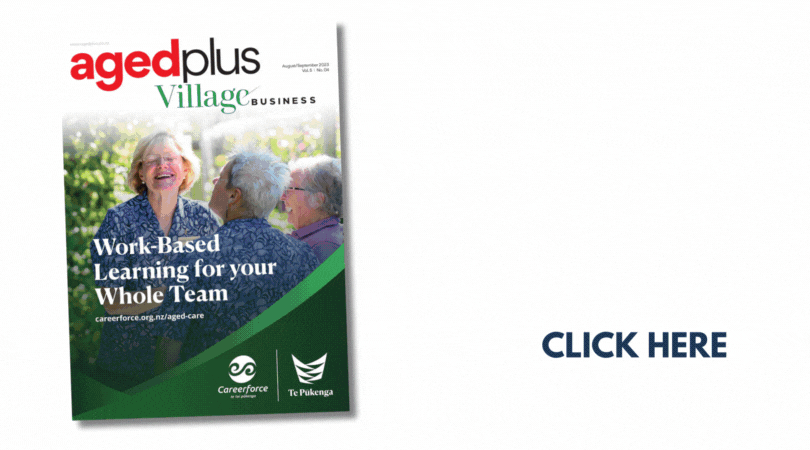AUSTRALIA’S aged care sector has united under one banner to demand that big-picture reform follow the recommendations of the Royal Commission into Aged Care Quality and Safety.
Launching the ‘It’s Time to Care About Aged Care’ campaign, the new Australian Aged Care Collaboration (AACC) alliance is targeting key marginal electorates where more than 800,000 older Australians live, in an attempt to encourage the national Parliament to address the sector’s many challenges.
The AACC believes an overhaul of the design, objectives, regulation and resourcing of aged care is urgently required if Australia is to deliver the care and services older people need and deserve now and into the future. Successive federal governments over the past two decades have failed to act on more than 20 independent reports highlighting the need for major reform.
The problem is clear. Australia devotes less than half of what comparable countries do to aged care (1.2 percent vs 2.5 percent of GDP). Denmark and Sweden allocate more than 4 percent of GDP. The AACC represents more than 1,000 organisations who deliver 70 percent of government-subsidised aged care services to 1.3 million Australians, either in their own homes or in communal residential settings.
It includes not-for-profit providers, primarily church and other charity organisations, and a number of private operators, as a new single industry voice delivering quality care for older Australians.
The problem:
• Australia’s aged care system is in urgent need of transformation, with 16,000 vulnerable Australians dying in 2017-18 while waiting for a government-subsidised support package in their
own home.
• An additional 100,000 people are waiting for home support at their approved level - with those in need of the highest-level packages typically waiting at least 12 months.
• Separately, a further 88,000 places will be required in communal Residential Aged Care over the next 10 years, at a cost of $55 billion.
• As a result, under-resourced aged care homes were described as in an ‘impossible situation’ by Counsel Assisting to the Royal Commission - and are struggling to maintain standards and staffing, whilst fighting to keep their doors open.”
AACC representatives Sean Rooney and Patricia Sparrow said more than 20 government aged-care reviews in 20 years had failed to fix the inadequate system.
“After 20 years of missed opportunities, Australia cannot let the release of the final Royal Commission report later this month pass without taking real action,” said Sparrow.
“Australia currently spends about half of what other comparable countries do on looking after their most vulnerable older citizens.
“Enough is enough – Australia should no longer accept the drip-feed of piecemeal rescue packages and ad-hoc changes.”
Rooney said the residential aged care sector was in crisis with 64 percent of homes operating at a loss in 2020, almost double the medium-term average of 33 percent.
“Under-resourcing of the aged care system has been growing for a long time and is not the fault of any one Government or Parliament,” he said.
“But it is the responsibility of all Parliamentarians to recognise the injustice and inequity of maintaining a system the Royal Commission described as ‘a shocking tale of neglect’.”
The campaign:
An ‘It’s Time to Care About Aged Care’ campaign advertisement helps explain the challenges of the current system. An additional ‘It’s Time to Care About Aged Care’ report identifies for the first time the 30 members of the 151-member Federal Parliament who represent the ‘oldest’ Australian communities by age, and who have the greatest obligation to fix the system.
Of these seats, 15 are marginal, and in some cases are held by only a few hundred votes. They contain 814,950 voters aged over 55, an extraordinarily concentrated voting block. Critical decision-makers on both sides of politics represent these older communities. For example, the current Minister for Aged Care Greg Hunt holds Australia’s eighth ‘oldest’ electorate, Flinders, in Melbourne, with 50.7 percent of voters aged over 55.
Similarly, the Opposition’s former Minister for Aged Care Justine Elliott holds the sixth ‘oldest’ electorate in Australia, Richmond, on the NSW north coast, with 51.4 percent of voters aged over 55 years old.
“The 30 Members of Parliament who represent Australia’s ‘oldest’ electorates have the greatest opportunity to represent the needs of their communities so that older Australians are finally given the respect, resources and support they deserve,” said Rooney.
“The Australian community looks to these elected officials to stand up for them in the national debate and to help influence positive outcomes on behalf of their constituents.
“These MPs have the opportunity to truly achieve something great – and avoid the mistakes of the past – by creating a sustainable and equitable aged care system that will stand the test of time.”
The future:
More than 4.1 million Australians, or almost 16 percent of the population, are currently aged over 65. By 2057, that will rise to 8.8 million, or 22 percent of the population, and by 2097 it will reach 12.8 million people, or one in four Australians.
“The challenges for aged care are only going to grow in the coming years, as the large Baby Boomer generation requires more support,” said Sparrow.
The Royal Commission into Aged Care Quality and Safety found that Australians strongly support increased funding to ensure access to high-quality care in the future.






